Cats Losing Whiskers: 4 Vet Approved Causes & FAQ
By Ashley Bates
Updated on
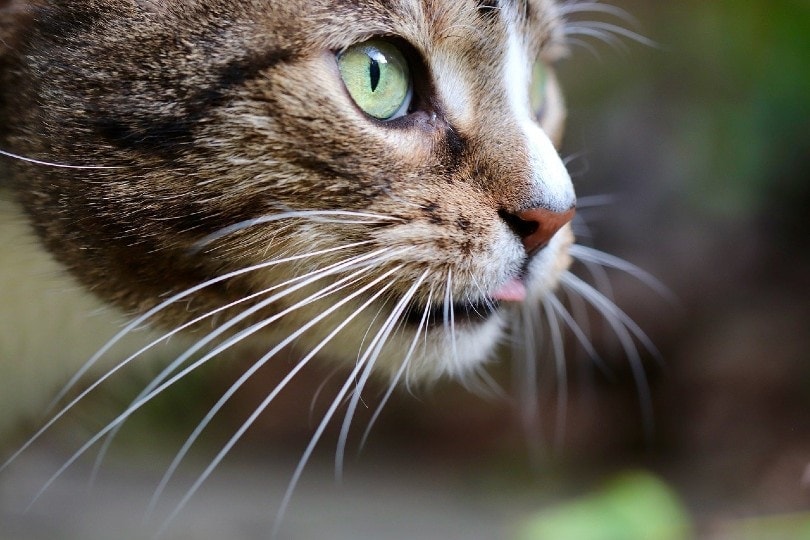
Whiskers are your cat’s navigational system. These adorable little spikes tell your cat about so much of what’s going on in the world. Any cat lover is probably aware that they play a vital role in your cat’s daily living. So, what happens if your cat no longer possesses these inbuilt GPS tools?
Your cat might lose whiskers for a few reasons. We will discuss why this might happen and how it could affect their lives.
The 4 Reasons Why Cats Lose Their Whiskers
1. Infection
Skin infections are often responsible for hair loss in cats. These infections can come from several sources, most of which are grouped into bacterial, fungal, and parasitic categories. Most of the time, whiskers remain unaffected by infections.
However, if your cat has an infection close to or in the whisker follicles, it can cause them to fall out, break off, or change. Often, other signs of infection include oozing, flakiness, redness, crusting, and inflammation.
Your vet will need to determine the underlying cause of the infection. They may take samples of the affected area or run further testing. Once the condition reveals itself, your vet will prescribe the medications necessary to treat the ailment.
You can expect medications, topical ointments, and medical-grade shampoos to return your cat to its original state. Once the issue is resolved, your cat’s whiskers should grow back independently.
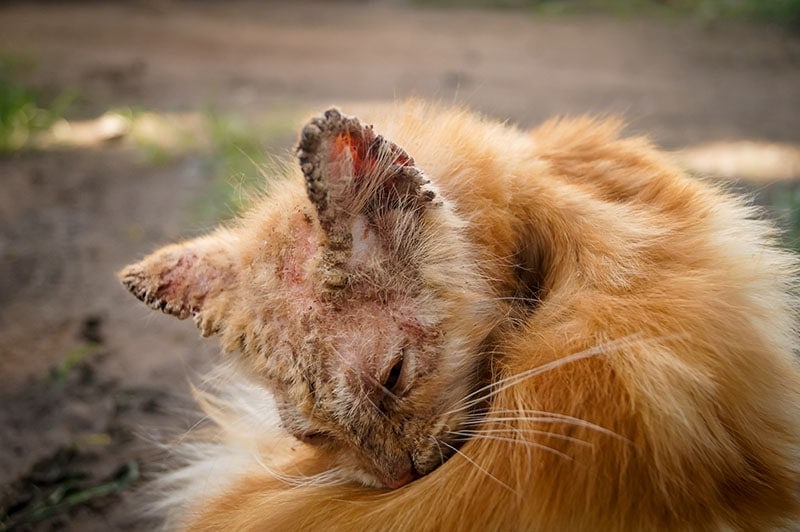
2. Feline Acne
You might be surprised to learn that cats can get acne too. It might differ slightly from human acne, but the basic concept is the same. Feline acne is a result of too much keratin and sebaceous gland overactivity. If the production is high, it can cause these glands to get blocked. Your cat will then develop what you might notice as blackheads on the chin and lip area. If you inspect closely, you might see tiny specks or black bumps.
While acne in itself might not cause whisker loss, secondary infections can. Most whisker loss will happen because of excessive itching or trauma to the area. This issue can be resolved with treatment from your veterinarian.
3. Physical Damage
Has your cat been having trouble with some neighborhood ruffians? If they are brawling with another cat, it can cause damage to multiple parts of the body, including the whiskers. Even if they’re engaging in rough play, and it’s all in good fun, it may break off whiskers or cause other trauma.
The good thing is, in most cases, the whiskers will grow back without any issue whatsoever. But you can encourage your cat to play nicer, even if they don’t take the advice.
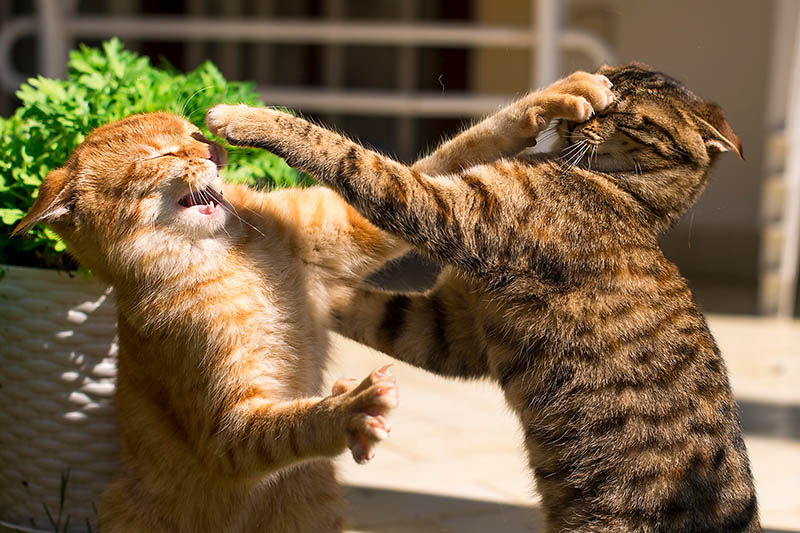
4. Allergies
Cats can have allergic reactions to several causes. Typically, these fall under three categories: environmental, food hypersensitivity, and parasites.
- Itching
- Rashes
- Hair loss
- Ear infections
- Skin infections
- Diarrhea (in case of food allergy)
If your cat has an allergic reaction, it can cause them to break out, develop skin irritation and rashes and sometimes ear and skin infections. If your cat has extreme facial itching, they might rub and damage the face. Constant rubbing or scratching can result in broken or fragmented whiskers.
If you suspect an allergy, get a hold of your veterinarian for further evaluation.
You will need to make sure your cat’s parasite control is up to date and your cat might have to undergo food trials, treatments, and lifestyle changes.These whiskers will return to their original glory once the allergy is under control.
What Purpose Do Whiskers Serve?
You can consider whiskers a special type of hair that differs from your cat’s coat. These long, stiff follicles sit deeper in the skin and are attached to nerve endings and muscles which allows them to move their whiskers. The most obvious place you’ll notice whiskers are on the side of your cat’s face near their mouth. They also have shorter whiskers above their eyes, jawline and on the back of their front legs.
Whiskers are quite unique and can process a lot of information. Whiskers can detect changes in air currents, helping them sense when something is nearby. They can help cats navigate and help them determine if they can fit through certain areas.
Cats cannot focus on an object until they are at least 12 inches away from its face, so whiskers help with the disadvantage.
Your cat’s whiskers can also indicate what kind of mood they’re in! So, you can see just how purposeful and unique these tiny sensors are.
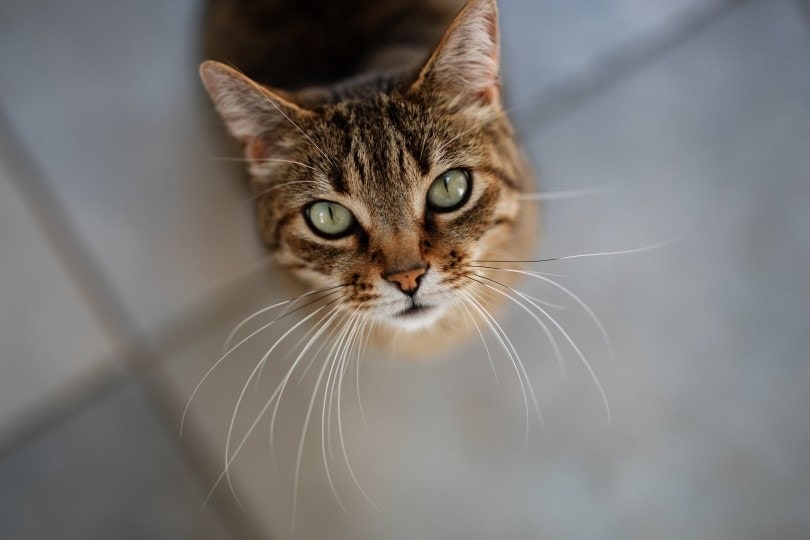
What Happens When You Cut a Cat’s Whiskers?
We want to clarify that you should never cut your cat’s whiskers for any reason. Not only could this be a painful experience, but it will also throw off your cat’s equilibrium, causing clumsiness and disorientation. The lack of spatial awareness can cause extreme confusion and a lack of grace.
So, you must understand that you should leave them alone altogether during grooming and trims.
Cats Can Have Different Whiskers
Most cat whiskers are long, straight follicles that stick out from the upper lips and eyebrows. However, that’s not the truth in every case. Cats that have the Rex gene will have curly, haywire whiskers that go all sorts of directions. Interestingly, despite the catawampus whiskers, these cats have no navigation problem.
- Devon Rex
- Selkirk Rex
- Cornish Rex
- LaPerm
- German Rex
- Ural Rex
- American Wirehair
- Snookum
These whimsical whiskers just make all these cats that much more interesting.
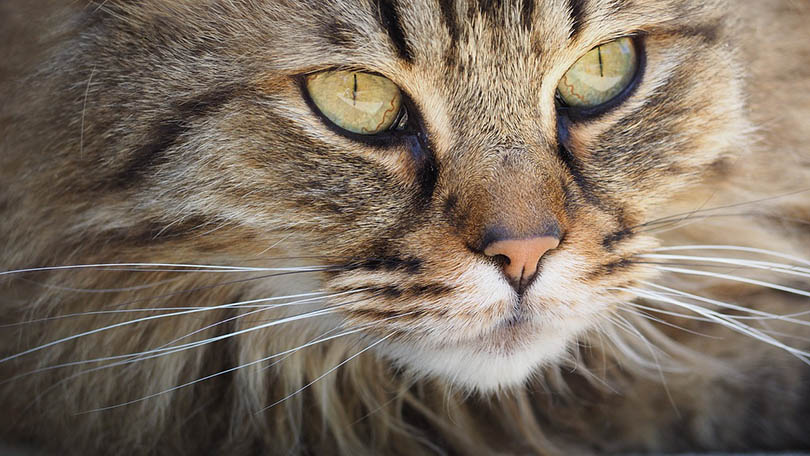
Do Cats Shed Whiskers?
Cats naturally lose some of their whiskers. Just like regular shedding, it is completely expected for your cat to lose a whisker or two here and there. In most cases, if your cat loses a whisker, you’ll never know. By the time losing whiskers is getting your attention, there’s probably already an underlying problem. Most underlying issues result in other signs that should be visible to the naked eye.
However, if you notice whiskers coming out in bulk or it seems as if they’ve been cut, it’s best to get them to your vet right away for an evaluation. They will have all of the resources to get to the bottom of the issue.
Conclusion
Now you understand that a cat losing all their whiskers is not a natural phenomenon. These sprouts are helpful for hunting, communicating, and understanding their environment. They absolutely require these stiff follicles to judge their surroundings.
You should never, under any circumstances, cut a cat’s whiskers. If you have any issue with your cat’s whiskers, get them to your vet right away for professional guidance. It could be one of the four reasons we have mentioned here, all of which will require appropriate treatment.
Featured Image Credit: Nennieinszweidrei, Pixabay













